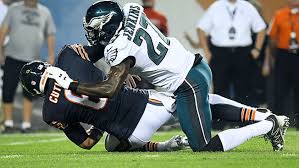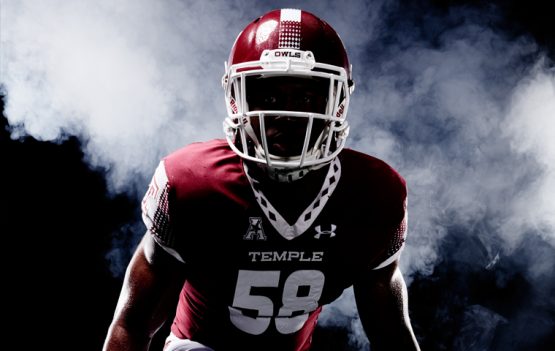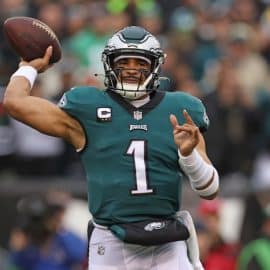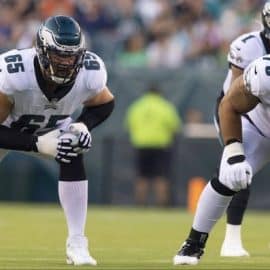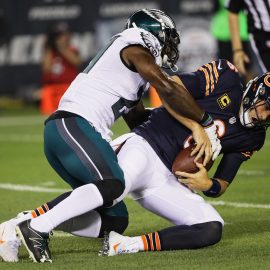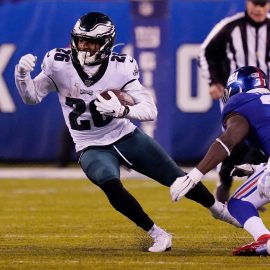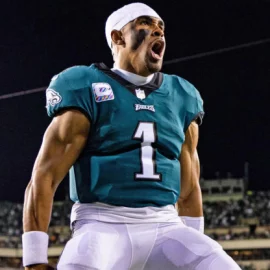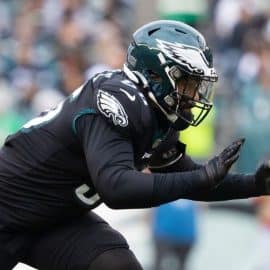Every now and then you get a learning opportunity from listening to an experienced former player who once helped forge the bonds of the Philadelphia Eagles fan community regulars who still come to this site ten years after…
Leo Pizzini is one of the original Four Horsemen who shaped the Eagles’ fan culture based upon the principle “to educate and entertain” back in the earliest days of the internet’s intrusion into mainstream Eagles commentary. It was Brizer, The Great JB99, DDD, and Leo….
Leo still hangs among us— a former NCAA collegiate safety and punter, a guy still young enough to play at a high level but now devoted to family and business matters, he balances his football attention between youth league coaching (with possible prep school or college coaching assignments in the making) and keeping an EYE on what the Eagles are doing in their quest for renewed NFL relevance.
Anyway, I thought Leo’s recent rant on the Eagles’ defensive strategy merited a replay.
Here is a reproduction of the presentation Leo made to us a day ago:
LEO PIZZINI: “Okay… long storytime now… here is my beef with Schwartz’ “full-time” Cover 2 defense…
1. Your linebackers are ALWAYS in conflict… step to run or zone drop… while new offensive schemes are built to attack “conflict” players…
2. Your corners are taking an outside leverage technique so they can peak in the backfield and read the inside receiver (makes your linebackers responsible for slant routes, snag and replace concepts… and in the new RPO environment that is real bad)…
3. It’s just as vulnerable to double moves as man coverage is because the zone rules are built to stop out- routes and go-routes… not wheel routes and chairs and sluggo’s… still one on one vs. 4 verticals… and vulnerable to vertical switches
“Every player on the field is in conflict with Cover 2… because they are reading and reacting… they better be really good to pull that off all game…Cover 2 is a solid defensive call situationally… it puts players in the right position against certain offensive plays… but if you see it… and you know it’s coming because your opponent does it 90% of the time… you can rip it apart… add a lot of 9 technique defensive ends against an offensive line, with big splits and your defensive tackles, and your inside linebackers and safeties need to be AMAZING because they are always in conflict…
“Tampa Bay and the Colts won Super Bowls with Cover 2 Schemes and the Bears got to the Super Bowl with it… so it can be done…but if you look at the defensive rosters those teams had… you can pretty quickly see how that is not gonna work for the Birds any time soon… and if you disagree with that… RPO offense did not really exist in the NFL back then… now everybody does it…
“Schwartz needs to adapt… mix it up a lot more… send heat… man-cover…robber cover… cloud cover… zone blitz… show a better feel for the game…
“So far… I just don’t like Schwartz as a DC very much….”
“The Seahawks have had a lot of success with Cover 2 also… so… it can be done… I kinda think they mix-it up a little more and for sure, they have the formula of players… they have the inside linebacker… the safeties and the corners to do it pretty well, Thomas, Chancellor, Sherman, Wagner… if we get guys like those… then we can give it a go… lol…”
“Everytime I hear someone say that we MUST get consistent pressure with the front 4 for Jim Schwartz’ defense to work…I re-realize that Schwartz sucks…
“Basically… without a Superstar defense… wide 9 Cover 2 ain’t winning…”
“If you understand what your opponent is doing… you can do more with less by scheme… if your scheme is vanilla… you are 100% relying on being better from a talent perspective than your opponent… mix-it-up wisely and you got a chance against any offense even when that offense is playing well…
“And one thing we know for sure… our defense is not often leaps and bounds better than the offense they are facing from a talent perspective… take some chances… put your balls on the table and give the defense a chance to force a mistake or be Jim Schwartz and be consistently mediocre…”
“The Giants played an ultra heavy amount of Cover 2 with some under-9 tech DE’s too in 2007… that’s another example that works against my dislike for the Schwartz scheme… hmm… still don’t like it yet… I gotta look up the numbers on zone defense called too…you guys are saying he dialed up blitzes and played man… I don’t see it… Cover 2 doesn’t mean everyone stays in place… I don’t think what you saw was man-coverage… CB will cover deep go route if inside receiver slants or gets vertical… so… zone is only one until you get your assignment by the play development… still all read and react…”
Cover 2— combined with the over defense 9 technique…. it’s a bigger fish to fry than we originally thought.
What is a Cover 2 scheme?
A Cover 2 defense is a simplified, more basic system that’s beginning to be phased out of NFL playbooks for just that reason. The Cover 2 scheme is notable because of the roles the safeties play and usually involves dropping both the free safety and the strong safety into coverage where they split the field in half. The cornerbacks jam opposing receivers off the line to disrupt their routes and then look inside to see the quarterback, knowing they have help over the top. The Cover 2 is designed to allow cornerbacks more free rein while making plays and employing safeties to limit the deep passes. If a team wants to limit their opponents in the passing game, a Cover 2 look is helpful. The Cover 2’s cousin, the Tampa 2, splits the safeties into thirds, with a middle linebacker dropping into deep coverage like this:
What are the strengths of this scheme?
The 2006 Chicago Bears ran one of the best Tampa 2 sets in the history of the NFL. That season, they finished fifth in the NFL in total defense. Chicago’s passing defense was only No. 11 in the league, but they forced an obscene 54 total turnovers, 24 of which were interceptions. No player had more than five interceptions, only one player had more than seven sacks and they sent only three defenders to the Pro Bowl despite a 13-3 record. They had a ton of youth (no starters were older than 29), they had speed and they had a deep rotation of talented playmakers.
Cover 2 schemes work well when teams don’t have particularly dominant players in size or stature, but they do have speed.
Running a Cover 2 system cuts down on deep passes since safeties are employed to guard the deep part of the field. It also allows the cornerbacks to be more versatile. They can come up and support the run, jam receivers in press coverage, jump routes with the confidence that safety help exists or they can stick with a receiver and have the added benefit of double coverage.
Weaknesses?
As with any zone scheme, the primary weakness lies in the pockets of the zone that don’t quite overlap. Teams who run Cover 2 sets might limit big plays, but they are susceptible to getting burned within eight to 20 yards of the line of scrimmage. An accurate quarterback and savvy receiver likely wouldn’t have many issues exploiting that weakness. Additionally, Cover 2 sets will leave the box seven-strong on any given play, and a Tampa 2 set could leave the middle linebacker out of position in case of a draw or play action; this opens the door for the opponents running game.
Finally, Cover 2 sets leave the door open for plenty of shipwrecked safeties. If a cornerback disengages, guesses wrong or leaves his coverage for any reason, he’s effectively leaving his safety in No Man’s Land. Safeties are safeties because they aren’t as fast and don’t play man-to-man coverage as well as cornerbacks; so while the scheme is designed to limit big plays, it also leaves the door open to breakdowns.
Cover 2 sets are typically utilized by teams with an abundance of athleticism but not much top-end size or talent. Since Cover 2 systems usually involve rushing less than a handful of players, it relies on the defensive backs to make plays rather than the pass rushers.
Add The Sports Daily to your Google News Feed!
